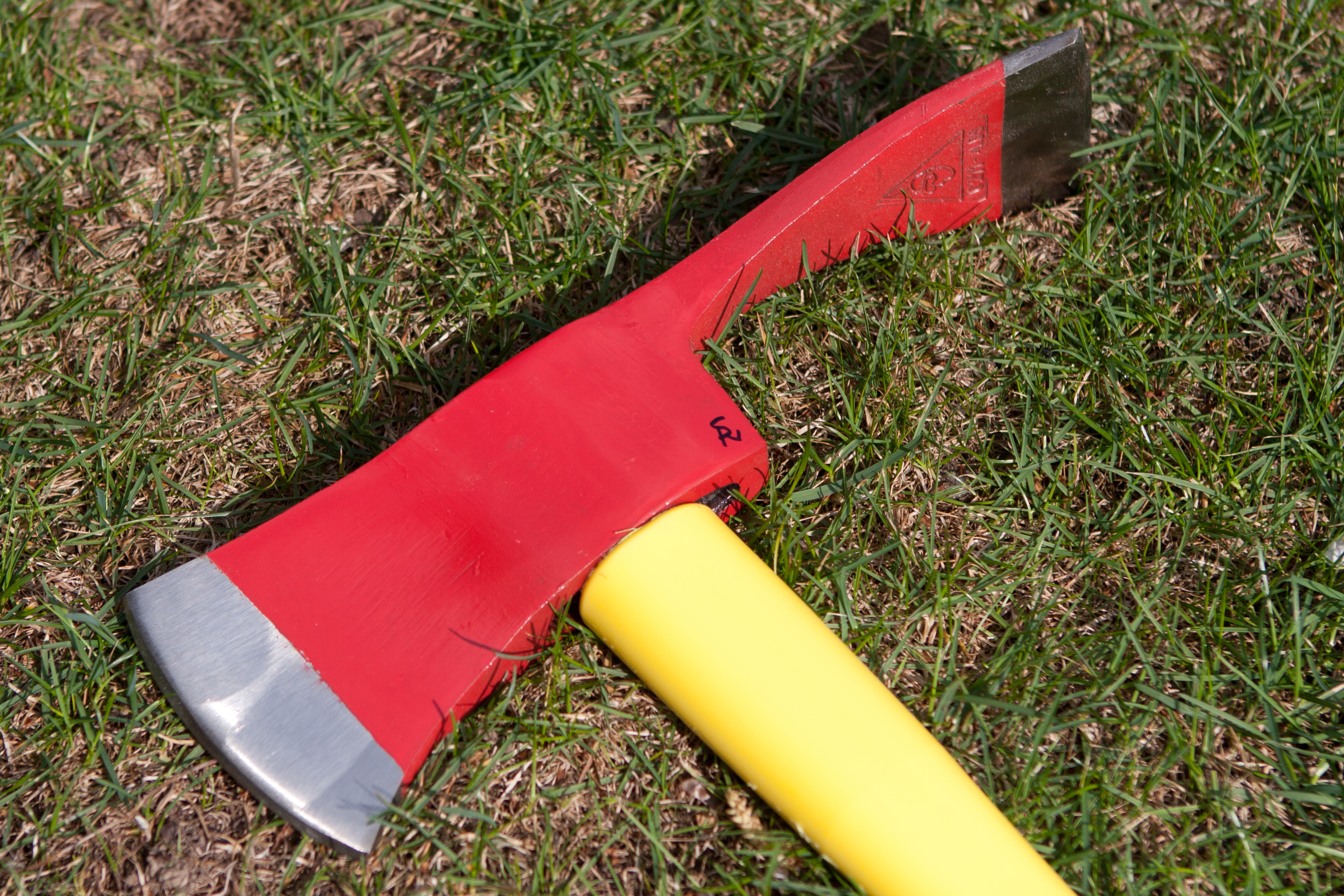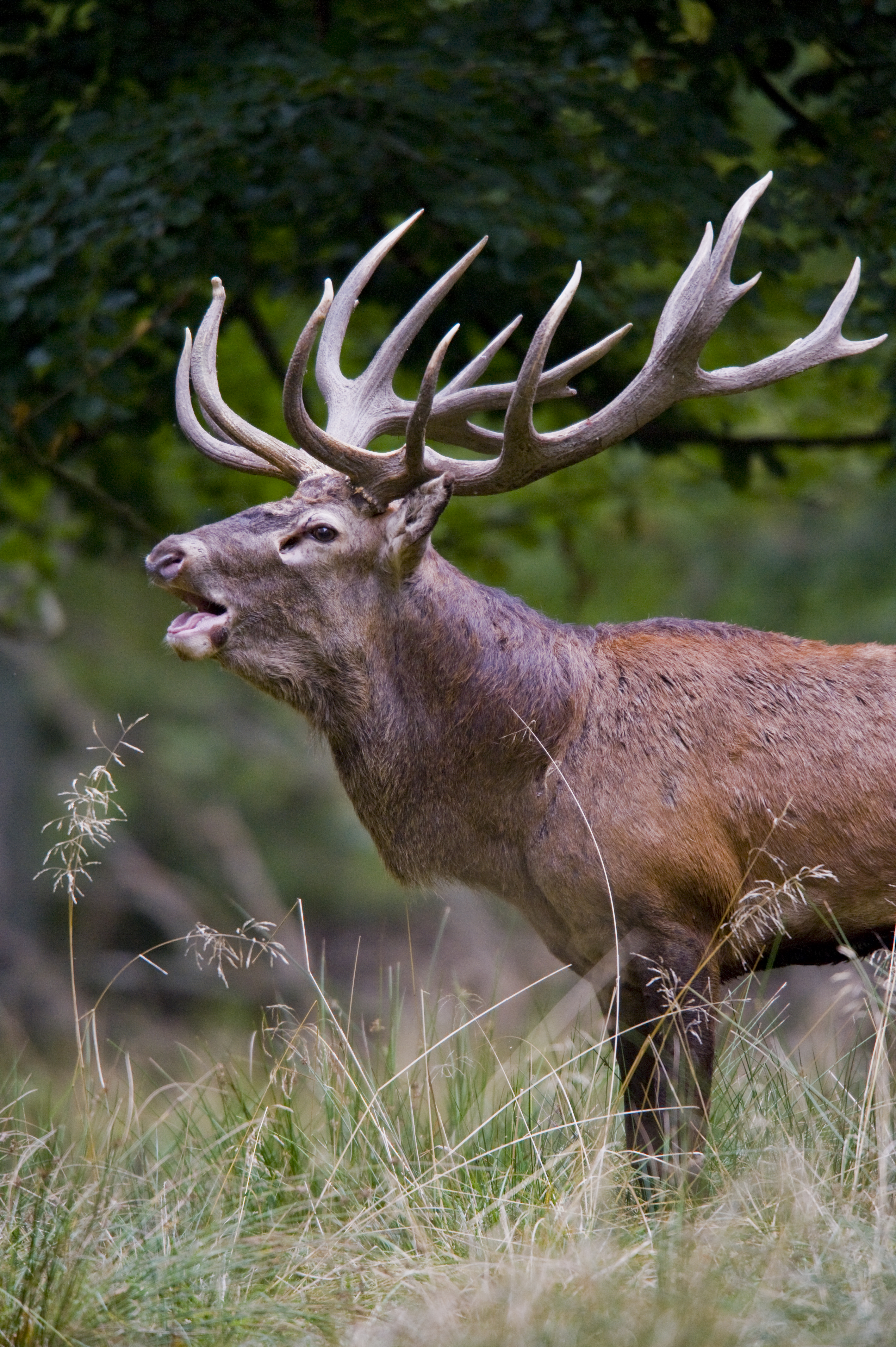|
Mattock
A mattock is a hand tool used for digging, prying, and chopping. Similar to the pickaxe, it has a long handle and a stout head which combines either a vertical axe blade with a horizontal adze (cutter mattock), or a pick and an adze (pick mattock). A cutter mattock is similar to a Pulaski used in fighting fires. It is also commonly known in North America as a "grub axe". Description A mattock has a shaft, typically made of wood, which is long. The head consists of two ends, opposite each other and separated by a central eye. A mattock head typically weighs . The form of the head determines the kind and uses of the mattock: * A ''cutter mattock'' combines the functions of an axe and adze, with its axe blade oriented vertically and longer adze horizontally. * A ''pick mattock'' combines the function of a pick and adze, with a pointed end opposite an adze blade. Both are used for grubbing in hard soils and rocky terrain, with the pick mattock having the advantage of a superio ... [...More Info...] [...Related Items...] OR: [Wikipedia] [Google] [Baidu] |
Enlil
Enlil, , "Lord f theWind" later known as Elil, is an ancient Mesopotamian god associated with wind, air, earth, and storms. He is first attested as the chief deity of the Sumerian pantheon, but he was later worshipped by the Akkadians, Babylonians, Assyrians, and Hurrians. Enlil's primary center of worship was the Ekur temple in the city of Nippur, which was believed to have been built by Enlil himself and was regarded as the "mooring-rope" of heaven and earth. He is also sometimes referred to in Sumerian texts as Nunamnir. According to one Sumerian hymn, Enlil himself was so holy that not even the other gods could look upon him. Enlil rose to prominence during the twenty-fourth century BC with the rise of Nippur. His cult fell into decline after Nippur was sacked by the Elamites in 1230 BC and he was eventually supplanted as the chief god of the Mesopotamian pantheon by the Babylonian national god Marduk. Enlil plays a vital role in the Sumerian creation myth; he sep ... [...More Info...] [...Related Items...] OR: [Wikipedia] [Google] [Baidu] |
Pickaxe
A pickaxe, pick-axe, or pick is a generally T-shaped hand tool used for Leverage (mechanics), prying. Its head is typically metal, attached perpendicularly to a longer handle, traditionally made of wood, occasionally metal, and increasingly fiberglass. A standard pickaxe, similar to a "mattock, pick mattock", has a pointed end on one side of its head and a broad flat "axe" blade opposite. A gradual curve characteristically spans the length of the head. The next most common configuration features two spikes, one slightly longer than the other. The pointed end is used both for breaking and prying, the axe for hoeing, skimming, and chopping through roots. Developed as agricultural tools in prehistoric times, picks have evolved into other tools such as the plough and the mattock. They also have been used in general construction and traditional mining, mining, and adapted to warfare. Etymology The Oxford Dictionary of English states that both "pick" and "pickaxe" have the ... [...More Info...] [...Related Items...] OR: [Wikipedia] [Google] [Baidu] |
Pickaxe
A pickaxe, pick-axe, or pick is a generally T-shaped hand tool used for Leverage (mechanics), prying. Its head is typically metal, attached perpendicularly to a longer handle, traditionally made of wood, occasionally metal, and increasingly fiberglass. A standard pickaxe, similar to a "mattock, pick mattock", has a pointed end on one side of its head and a broad flat "axe" blade opposite. A gradual curve characteristically spans the length of the head. The next most common configuration features two spikes, one slightly longer than the other. The pointed end is used both for breaking and prying, the axe for hoeing, skimming, and chopping through roots. Developed as agricultural tools in prehistoric times, picks have evolved into other tools such as the plough and the mattock. They also have been used in general construction and traditional mining, mining, and adapted to warfare. Etymology The Oxford Dictionary of English states that both "pick" and "pickaxe" have the ... [...More Info...] [...Related Items...] OR: [Wikipedia] [Google] [Baidu] |
Pulaski (tool)
The Pulaski is a special hand tool used in fighting fires, particularly wildfires, which combines an axe and an adze in one head. Similar to a cutter mattock, it has a rigid handle of wood, plastic, or fiberglass. The Pulaski is used for constructing firebreaks, able to both dig soil and chop wood. It is also well adapted for trail construction, and can be used for gardening and other outdoor work for general excavation and digging holes in root-bound or hard soil. The axe blade of the Pulaski is the primary cutting edge, while the adze blade is secondary; this is the opposite of the cutter mattock, in which the adze blade is the larger of the two. The invention of the Pulaski is credited to Ed Pulaski, an assistant ranger with the United States Forest Service in 1911. Similar tools were introduced in 1876 by the Collins Tool Company. A tool that serves the same purpose was used in the Alps for over 300 years for planting trees ( Wiedehopfhaue) or the dolabra in ancient Rome ... [...More Info...] [...Related Items...] OR: [Wikipedia] [Google] [Baidu] |
Tree Planting
Tree-planting is the process of transplanting tree seedlings, generally for forestry, land reclamation, or landscaping purpose. It differs from the transplantation of larger trees in arboriculture, and from the lower cost but slower and less reliable distribution of tree seeds. Trees contribute to their environment over long periods of time by providing oxygen, improving air quality, climate amelioration, conserving water, preserving soil, and supporting wildlife. During the process of photosynthesis, trees take in carbon dioxide and produce the oxygen we breathe. In silviculture the activity is known as reforestation, or afforestation, depending on whether the area being planted has or has not recently been forested. It involves planting seedlings over an area of land where the forest has been harvested or damaged by fire, disease or human activity. Tree planting is carried out in many different parts of the world, and strategies may differ widely across nations and regions a ... [...More Info...] [...Related Items...] OR: [Wikipedia] [Google] [Baidu] |
Adze
An adze (; alternative spelling: adz) is an ancient and versatile cutting tool similar to an axe but with the cutting edge perpendicular to the handle rather than parallel. Adzes have been used since the Stone Age. They are used for smoothing or carving wood in hand woodworking, and as a hoe for agriculture and horticulture. Two basic forms of an adze are the hand adze (short hoe)—a short-handled tool swung with one hand—and the foot adze (hoe)—a long-handled tool capable of powerful swings using both hands, the cutting edge usually striking at foot or shin level. A similar tool is called a mattock, which differs by having two blades, one perpendicular to the handle and one parallel. History Africa The adze is depicted in ancient Egyptian art from the Old Kingdom onward. Originally the adze blades were made of stone, but already in the Predynastic Period copper adzes had all but replaced those made of flint. stone blades were fastened to the handle by tying and early ... [...More Info...] [...Related Items...] OR: [Wikipedia] [Google] [Baidu] |
British Isles
The British Isles are a group of islands in the North Atlantic Ocean off the north-western coast of continental Europe, consisting of the islands of Great Britain, Ireland, the Isle of Man, the Inner and Outer Hebrides, the Northern Isles, and over six thousand smaller islands."British Isles", ''Encyclopædia Britannica''. They have a total area of and a combined population of almost 72 million, and include two sovereign states, the Republic of Ireland (which covers roughly five-sixths of Ireland), and the United Kingdom of Great Britain and Northern Ireland. The Channel Islands, off the north coast of France, are normally taken to be part of the British Isles, even though they do not form part of the archipelago. The oldest rocks are 2.7 billion years old and are found in Ireland, Wales and the northwest of Scotland. During the Silurian period, the north-western regions collided with the south-east, which had been part of a separate continental landmass. The ... [...More Info...] [...Related Items...] OR: [Wikipedia] [Google] [Baidu] |
Antler
Antlers are extensions of an animal's skull found in members of the Cervidae (deer) family. Antlers are a single structure composed of bone, cartilage, fibrous tissue, skin, nerves, and blood vessels. They are generally found only on males, with the exception of reindeer/caribou. Antlers are shed and regrown each year and function primarily as objects of sexual attraction and as weapons. In contrast to antlers, horns—found on pronghorns and bovids, such as sheep, goats, bison and cattle—are two-part structures that usually do not shed. A horn's interior of bone is covered by an exterior sheath made of keratin (the same material as human fingernails and toenails). Etymology Antler comes from the Old French ''antoillier '' (see present French : "Andouiller", from'' ant-, ''meaning before,'' oeil, ''meaning eye and'' -ier'', a suffix indicating an action or state of being) possibly from some form of an unattested Latin word ''*anteocularis'', "before the eye" (and appl ... [...More Info...] [...Related Items...] OR: [Wikipedia] [Google] [Baidu] |
American School Of Classical Studies At Athens
, native_name_lang = Greek , image = American School of Classical Studies at Athens.jpg , image_size = , image_alt = , caption = The ASCSA main building as seen from Mount Lykavittos , latin_name = , other_name = , former_name = , motto = , motto_lang = , mottoeng = , established = 1881 , closed = , type = Overseas Research Center / Higher Education , parent = , affiliation = , religious_affiliation = , academic_affiliation = , endowment = , budget = , officer_in_charge = , chairman = , chairperson = , chancellor = , president = , vice-president = , superintendent = , provost = , vice_chancellor = , rector = , principal = , dean = , director = , head_label = , head = , academic_staff = , administrative_staff = , students = , undergrad = , postgrad = , doctoral = , other = , city = Athens , state = , province = , country = Greece , coor = , campus = urban , language = , free_label = , fr ... [...More Info...] [...Related Items...] OR: [Wikipedia] [Google] [Baidu] |
Mesolithic
The Mesolithic (Greek: μέσος, ''mesos'' 'middle' + λίθος, ''lithos'' 'stone') or Middle Stone Age is the Old World archaeological period between the Upper Paleolithic and the Neolithic. The term Epipaleolithic is often used synonymously, especially for outside northern Europe, and for the corresponding period in the Levant and Caucasus. The Mesolithic has different time spans in different parts of Eurasia. It refers to the final period of hunter-gatherer cultures in Europe and Western Asia, between the end of the Last Glacial Maximum and the Neolithic Revolution. In Europe it spans roughly 15,000 to 5,000 BP; in Southwest Asia (the Epipalaeolithic Near East) roughly 20,000 to 10,000 BP. The term is less used of areas farther east, and not at all beyond Eurasia and North Africa. The type of culture associated with the Mesolithic varies between areas, but it is associated with a decline in the group hunting of large animals in favour of a broader hunter-g ... [...More Info...] [...Related Items...] OR: [Wikipedia] [Google] [Baidu] |
Works And Days
''Works and Days'' ( grc, Ἔργα καὶ Ἡμέραι, Érga kaì Hēmérai)The ''Works and Days'' is sometimes called by the Latin translation of the title, ''Opera et Dies''. Common abbreviations are ''WD'' and ''Op''. for ''Opera''. is a didactic poem written by the ancient Greek poet Hesiod around 700 BC. It is in dactylic hexameter and contains 828 lines. At its center, the ''Works and Days'' is a Almanac, farmer's almanac in which Hesiod instructs his brother Perses (brother of Hesiod), Perses in the agricultural arts. Scholars have seen this work against a background of agrarian crisis in mainland Greece, which inspired a wave of Greek colonies, colonial expeditions in search of new land. In the poem, Hesiod also offers his brother extensive moralizing advice on how he should live his life. ''Works and Days'' is perhaps best known for its two mythological aetiology, aetiologies for the toil and pain that define the human condition: the story of Prometheus and Pandora, ... [...More Info...] [...Related Items...] OR: [Wikipedia] [Google] [Baidu] |
Hesiod
Hesiod (; grc-gre, Ἡσίοδος ''Hēsíodos'') was an ancient Greek poet generally thought to have been active between 750 and 650 BC, around the same time as Homer. He is generally regarded by western authors as 'the first written poet in the Western tradition to regard himself as an individual persona with an active role to play in his subject.' Ancient authors credited Hesiod and Homer with establishing Greek religious customs. Modern scholars refer to him as a major source on Greek mythology, farming techniques, early economic thought, archaic Greek astronomy and ancient time-keeping. Life The dating of Hesiod's life is a contested issue in scholarly circles (''see § Dating below''). Epic narrative allowed poets like Homer no opportunity for personal revelations. However, Hesiod's extant work comprises several didactic poems in which he went out of his way to let his audience in on a few details of his life. There are three explicit references in ''Works and Days'' ... [...More Info...] [...Related Items...] OR: [Wikipedia] [Google] [Baidu] |





.png)





